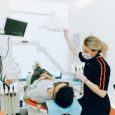 Regenerative medicine raised almost $35 billion in investments between 2020 and 2021. This developing area of medicine is promising many treatments for different illnesses.
Regenerative medicine raised almost $35 billion in investments between 2020 and 2021. This developing area of medicine is promising many treatments for different illnesses.
But because it is such a new area of research, so it’s not common knowledge yet. You might not understand what regenerative therapy is or why it is beneficial.
This article is here to explain the ins and outs of regenerative orthopedic medicine. It covers what regenerative medicine is and different therapy options.
What is Regenerative Medicine?
Regenerative medicine is the practice of repairing damaged organs or tissue. The principle behind these types of therapy is that it aids your body in healing itself. It aims to offer an alternative to relying on exterior medicines.
It has developed from a background in stem cell research. It works towards human regeneration on a molecular, cellular, and tissue level.
This is still a new area of medicine and is still ongoing with clinical trials and research. If you feel interested in this kind of therapy, you should always contact your doctor first.
What are the Different Types of Regenerative Therapy?
No two injuries are the same, and advanced regenerative medicine tackles this with a whole-body approach. To make the best recovery, you will need a personalized treatment plan. Let’s look at some of the popular regenerative therapy options.
Regenerative Cell Therapy
This treatment uses stem cells. Stem cells are special because they can develop into any type of cell that your body needs.
The doctor will collect cells from the patient’s own body, to reduce the chances of rejection. They inject the cells into any damaged body part. The cells then help to regenerate the damaged tissues, cartilage, or organs.
Platelet-Rich Plasma (PRP) Therapy
PRP therapy is where the plasma gets injected into damaged body tissue. The idea is that it stimulates new growth and promotes cell healing. Although research in this area is still new, many athletes use PRP to aid recovery.
Because the plasma comes from your own body, this reduces any chance of adverse reactions. There is no definitive recovery time after this treatment. But most doctors would recommend resting the day afterward.
Prolotherapy
An alternative treatment for muscle or joint pain is prolotherapy. It has existed since the 1950s and acts as a treatment for ongoing muscular pain.
It works by injecting an irritant into the sore area. Your body then recognizes the irritation and sends healing cells to that part of the body. This speeds up healing and repairs soft tissues like blood vessels, muscles, or nerves.
Find the Right Treatment for You!
Regenerative therapy is a promising new area of medicine. Researchers are developing techniques to heal us using our own bodies. Although it is a new field of research, there are many possibilities to help a variety of conditions.
If you found this article helpful, check out our health section. There you can find more informative blogs about many health-related topics!




